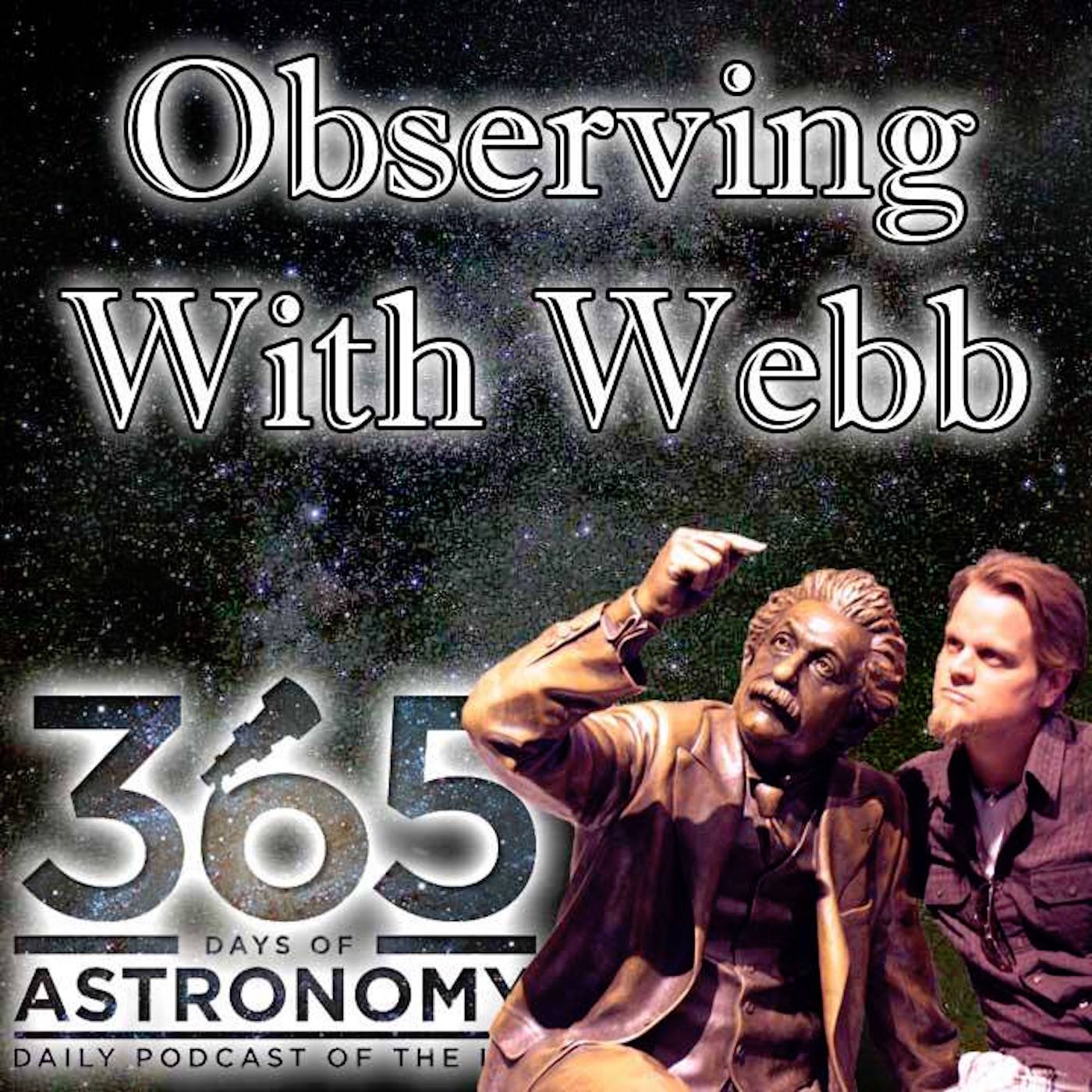Episodes

Saturday Feb 25, 2012
March 2012
Saturday Feb 25, 2012
Saturday Feb 25, 2012
March 2012 is a great time to be looking for planets in the sky, since Venus, Mars, and Jupiter are all up after sunset for the whole month, Jupiter and Venus are moving close to and then past each other, Mars is brightest for the year, and the Moon will be tracking close to these planets throughout the month. EVENTS...
7th - Close Encounter - Moon & Mars - Go out after sunset and find the almost full Moon in the East-. Mars is about 10˚ (the width of one fist at arm's length) to the left of the Moon. Look for the reddish object below Leo. Watch them rise throughout the night and set in the West by dawn.
Full Moon - 8th (Visible all night - East around sunset, West around Sunrise) - Hopefully it snows so you can really see wonderfully by the light of the Moon - Good for night hikes.
11th - Close Encounter - Moon & Saturn - Look to the SE around midnight and find the gibbous Moon rising. Saturn will be the bright object about 6˚ above the Moon. Spica, Virgo's brightest star, is a little to the right of these two, making a nice triangle.
11th - Daylight Savings Time Begins
12th, 13th - Planetary Close Encounter - Venus and Jupiter - only about 3˚ apart in the West after sunset until 9pm.
Last Quarter Moon - 14th (Visible from midnight into the morning)
20th - Spring Equinox - Astronomically the first day of Spring, even though meteorologically Spring starts in the beginning of March. Here's some more info.
New Moon - 22nd (darkest skies)
24th - 27th - Sunset Moon & Planets - Jupiter, Venus, the Pleiades, and Taurus make a great sight in the West after sunset as the crescent Moon travels through night after night. Get you camera out for this one! See the picture below.
25th - Close Encounter - Moon & Jupiter - Look West after sunset. The thin crescent Moon will be less than 3˚ to the right of Jupiter. Brilliant for pictures with zoom lenses. Also note that Venus is just 10˚ above them.
26th - Close Encounter - Moon & Venus - Look to the West after sunset and you'll see Venus less than 3˚ to the right of the crescent Moon.
First Quarter Moon - 30th (Visible until midnight)

Mercury - Only worth looking for until the 10th of the month, during which time it's 10˚ above the horizon. Bring binoculars and look west after sunset.
VENUS - Look toward the West after sunset. From now until May, Venus will be very prominent, then quickly get lower and disappear by the end of May. If you're looking with your naked eye, it is the brightest object about 30˚ or more (three fist-widths) above the western horizon. Below the horizon after 9:00pm. Close to the Moon on the 26th right after sunset toward the West. If you're looking through a telescope at dusk, you may see it in its half-lit phase. It will become more of a crescent in May. Extra Challenge! Take a picture of Venus near the crescent Moon and Pleiades on the 26th, or when it's super close to Jupiter on the 12th and 13th. Submit it to me and I'll show it off next month right here.
MARS - March is a great time to look at Mars - it's brightest for this year this month and is up all night. In the East after sunset. Look for the constellation of Leo and look for the reddish hued point of light right in the middle - use a star chart to help. Close to the Moon on the 7th.
JUPITER - About 30˚ above the Western horizon right at sunset and sets around 9pm. Close to the Moon on the 25th. Extra Challenge! Take a picture of Jupiter near the crescent Moon on the 25th, or when it's super close to Venus on the 12th and 13th. Submit it to me and I'll show it off next month right here.
Saturn - Rising in the SE around 9pm and setting in the west around sunrise. Saturn will be up to 40˚ above the southern horizon at 2am. Near the Moon on the morning of the 11th.
CONSTELLATIONS... (see sky map link at the bottom for a Star Map for this month - or ask Mr. Webb) Look straight up and you'll see...After Sunset (sunset is around 5:30-6:30pm) - Auriga (Taurus is right nearby), Gemini
Between Sunset and Midnight - Cancer, Gemini, Lynx, and Leo (with Mars) later in the month - Extra Challenge! Find M44 in the Middle of Cancer - an open cluster of stars also known as the Beehive Cluster. You may be able to see it as a small fuzzy patch with your naked eye if you have very dark skies. However with a pair of binoculars or a telescope on low power, it will look like a hive of bees in the distance, hence its nickname.
Midnight - Leo, Leo Minor, Ursa Major's legs
Early Morning - Corona Borealis, Hercules, Boötes (you can also find the Big Dipper's handle, and starting from the inside of the handle, follow the arc that those four stars make past the last star in the handle about 30˚ or three fist-widths to the next very bright star you find which is Arcturus, the base of the constellation Boötes. Hence astronomers use the phrase "Follow the Arc to Arcturus")
GENERAL CONSTELLATION FINDING TIPS:Winter constellations: Orion is easy to spot as he is high in the south as the Sun sets. You can use Orion to find many other winter constellations.
Using Orion: Find Orion by looking for the three stars in a row that make up Orion's belt in the South after 7pm. If you draw a line from the left star to the right star and keep going right about 20 degrees (about 2 fists at arm's length) until you reach another very bright star, you will have reached the star Aldebaron in Taurus (the V). Follow that line a little more (about another fist) and you'll find the Pleiades.
If you start at his belt again, but instead go the opposite way and draw a line from the right star in Orion's belt to the left star, and keep going left about 20 degrees (2 fists again), you'll come to the brightest star in the sky - Sirius - part of Canis Major.
Above these three constellations are Gemini and Auriga. The brightest stars in each of these constellations form a circle in the sky. Going clockwise - Aldebaron (Taurus) - Rigel (Orion - bottom right foot) - Sirius (Canis Major) - Procyon (Canis Minor) - Castor & Pollux (Gemini) - Capella (Auriga). It makes for great stargazing in the winter sky.
Use a sky map from www.skymaps.com to help you out.

No comments yet. Be the first to say something!